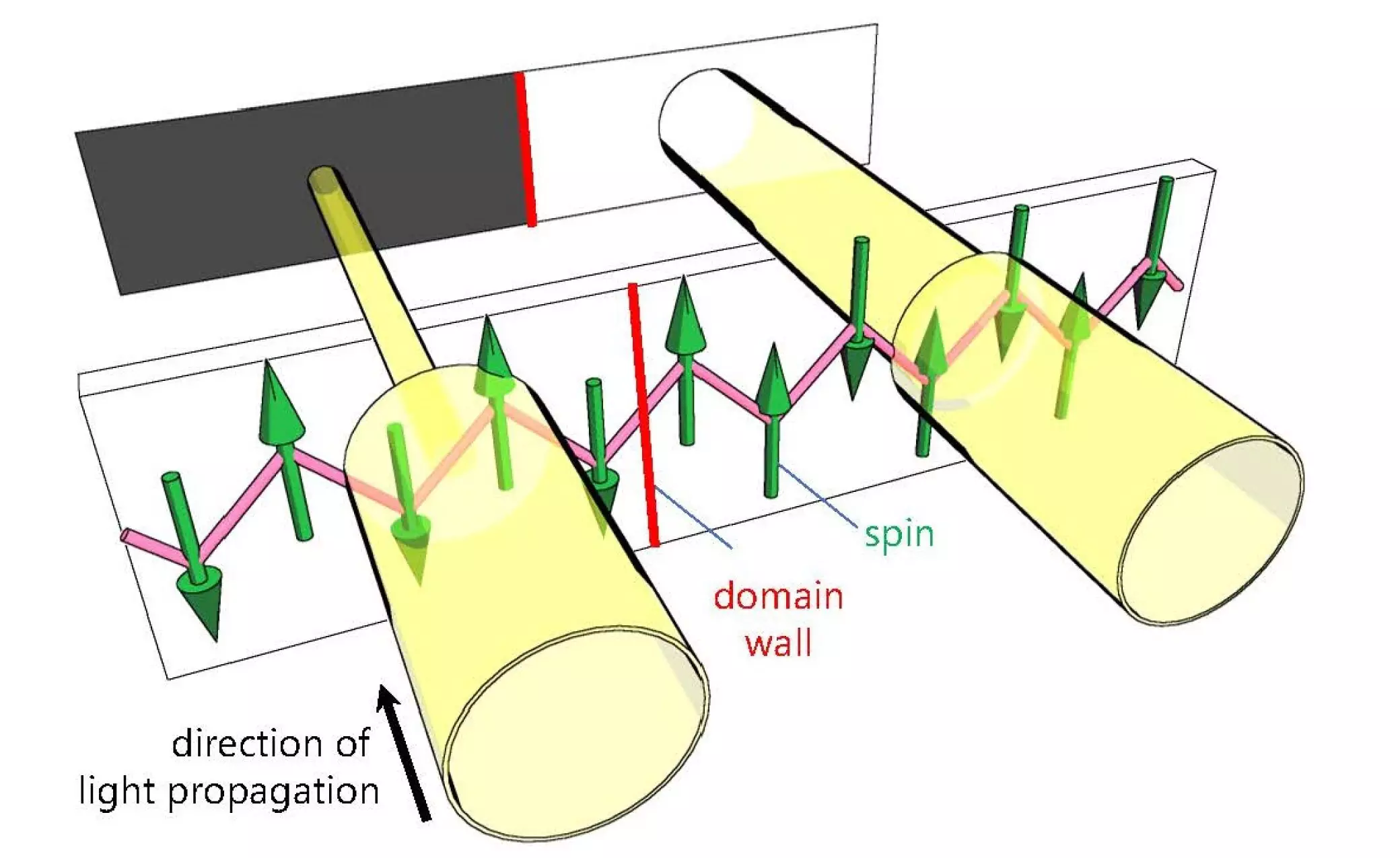Throughout history, magnets have captivated human curiosity, from compasses guiding navigation to advanced technologies shaping modern electronics. Now, cutting-edge research by scientists from Osaka Metropolitan University and the University of Tokyo has taken this fascination to a new dimension by utilizing light to visualize and manipulate magnetic domains in antiferromagnetic materials. Published in *Physical Review Letters*, this groundbreaking study sheds light on the complex interplay of magnetism and quantum mechanics.
Antiferromagnets represent a unique class of materials that challenge our conventional understanding of magnetism. Unlike typical ferromagnets, which exhibit distinct north and south poles, antiferromagnetic materials display a cancellation of magnetic moments. In these materials, atomic spins align in opposing directions, resulting in no net magnetic field. This unique characteristic has ignited interest among technologists seeking innovative applications in electronics and data storage, particularly as we pave the way for next-generation devices.
Challenges in Observing Antiferromagnetic Domains
The research team faced significant obstacles in their quest. Kenta Kimura, an associate professor at Osaka Metropolitan University and the study’s lead author, noted the intrinsic difficulties in observing magnetic domains within quasi-one-dimensional quantum antiferromagnetic materials. These challenges stem from their low magnetic transition temperatures and limited magnetic moments. Indeed, the inability to visualize these magnetic domains has hindered the exploration of their properties and potential applications.
Magnetic domains are critical regions within materials where spins align uniformly, creating localized magnetic behavior. The boundaries separating these domains, known as domain walls, are of particular interest in understanding the fundamental properties of magnetic materials. Through innovative methods, the researchers sought to unlock the mysteries hidden within these intriguing domains.
A Novel Approach: Harnessing Light for Visualization
Recognizing the limitations of traditional observation techniques, the team turned to a creative solution. By studying the quasi-one-dimensional quantum antiferromagnet BaCu2Si2O7, they employed nonreciprocal directional dichroism. This phenomenon refers to the differential absorption of light based on the direction of magnetic moments or the light itself. Their experimentation unveiled the previously elusive magnetic domains, revealing that they coexist within a single crystal and align with specific atomic chains, or spin chains.
“Seeing is believing and understanding starts with direct observation,” Kimura emphasized. The breakthrough made with this optical microscopy technique not only allowed for a pioneering visualization of magnetic domains but also provided a pathway to future experimentation and understanding.
Building on their successful visualization, the researchers went a step further to demonstrate the manipulation of magnetic domain walls using an electric field. This technique relies on magnetoelectric coupling, which intertwines magnetic and electric properties, enabling the movement of domain walls while preserving their orientation. Kimura pointed out that this optical method is “straightforward and fast,” potentially allowing for real-time observation of domain wall movement in future studies.
This milestone in research not only expands our understanding of quantum antiferromagnets but also opens up promising possibilities for technological advancements. The ability to visualize and manipulate these magnetic regions marks a notable step forward in harnessing quantum materials for practical applications.
As the researchers forge ahead, Kimura emphasized the potential for applying their observation techniques to various quasi-one-dimensional quantum antiferromagnets. By delving deeper into the implications of quantum fluctuations on domain formation and movement, the study has implications for the development of cutting-edge electronics utilizing antiferromagnetic materials.
This significant advancement in the exploration of antiferromagnetic materials presents a rich landscape for future research. The blending of optical techniques with quantum physics could lead to a new era of technological innovation, allowing scientists and engineers alike to harness the unique properties of these materials for societal benefit. As we continue to navigate the quantum frontier, the findings of this study may very well reshape our understanding of magnetism and its applications in various fields.

